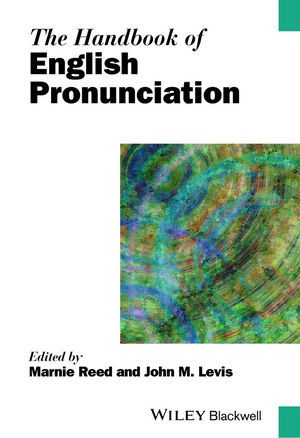Ulteriori informazioni
Informationen zum Autor Marnie Reed is Professor of Education and affiliated faculty in the Program in Applied Linguistics at Boston University, USA. She is also Director of the graduate program in Teaching English to Speakers of Other Languages (TESOL) in the School of Education, where she teaches courses in linguistics, second language acquisition, and applied phonetics and phonology. John M. Levis is Angela B. Pavitt Professor of English in the Applied Linguistics and TESL program at Iowa State University, USA. He specializes in the teaching of pronunciation and oral communication, phonetics and phonology, introductory linguistics, dialects in American literature, and technology and oral communication. Klappentext The Handbook of English Pronunciation presents a comprehensive exploration of English pronunciation with essential topics for applied linguistics researchers and teachers, including language acquisition, varieties of English, historical perspectives, accent's changing role, and connections to discourse, technology, and pedagogy.* Provides thorough descriptions of all elements of English pronunciation* Features contributions from a global list of authors, reflecting the finest scholarship available* Explores a careful balance of issues and topics important to both researchers and teachers* Provides a historical understanding of the importance of pronunciation and examines some of the major ways English is pronounced today throughout the world* Considers practical concerns about how research and practice interact in teaching pronunciation in the classroom Zusammenfassung The Handbook of English Pronunciation presents acomprehensive exploration of English pronunciation with essentialtopics for applied linguistics researchers and teachers, includinglanguage acquisition, varieties of English, historicalperspectives, accent s changing role, and connections todiscourse, technology, and pedagogy. Inhaltsverzeichnis Table of ContentsNotes on ContributorsIntroductionA. The History of English Pronunciation1. The historical evolution of English pronunciation (Jeremy Smith, UK)2. Accent as a social symbol (Lynda Mugglestone, UK)3. History of ESL Pronunciation Teaching (John Murphy, US and Amanda Baker, Australia)B. Describing English Pronunciation4. Segmentals (David Deterding, Brunei)5. Syllable structure (Adam Brown, New Zealand)6. Lexical stress in English pronunciation (Anne Cutler, The Netherlands)7. The Rhythmic Patterning of English(es): Implications for Pronunciation Teaching (Ee Ling Low, Singapore)8. English Intonation - Form and Meaning (Anne Wichmann, UK and John Levis, US)C. Pronunciation and Discourse9. Connected speech (Ghinwa Alameen, Syria and John Levis, US)10. Functions of intonation in discourse (Anne Wichmann, UK)11. Pronunciation in the analysis of discourse (Beatrice Szczepek Reed, UK)12. Fluency (Ron Thomson, Brock University, Canada)D. Pronunciation of the major varieties of English13. North American English (Charles Boberg, Canada)14. British English (Clive Upton, UK)15. Australian/New Zealand English (Laurie Bauer, New Zealand)16. The Pronunciation of English in South Africa (Ian Bekker, Zambia and Albertus van Rooy, Zambia)17. Indian English Pronounciation (Pramod Pandey, India)18. Pronunciation and World Englishes (Cecil Nelson, US and Seong-Yoon Kang, South Korea)E. Pronunciation and language acquisition19. The acquisition of the English Sound System (Marilyn Vihman, UK)20. Variables affecting L2 pronunciation development (Pavel Trofimovich, Sara Kennedy, Jennifer Anne Foote, Canada)F. Pronunciation Teaching21. Intelligibility in Research and Practice: Teaching Priorities (Tracey Derwing and Murray Munro, Canada)22. The Segmental/Suprasegmental Debate (Beth Zielinski, Australia)23. Applying theories of learning and language to teaching pronunciation (...

